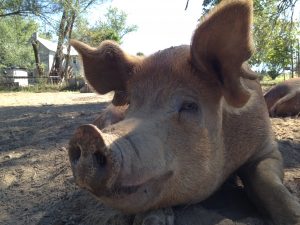 I had no experience raising pigs before moving to Missouri. Fred grew up raising and butchering pigs, so all of this is old hat to him. With my vast lack of knowledge and huge desire to have pigs, I did what I knew to do–read as much as I could to get all the info I could to be prepared for everything that could possibly happen. I also talked to an old timer who gave me such sage advice as “if the pig ain’t dead, it’ll be just fine” and “you’ll NEVER be as fast as a pig”. Both have proven to be quite true, but I still worry over the tiniest scratch and can’t resist getting just a bit closer to newborns with a protective momma around.
I had no experience raising pigs before moving to Missouri. Fred grew up raising and butchering pigs, so all of this is old hat to him. With my vast lack of knowledge and huge desire to have pigs, I did what I knew to do–read as much as I could to get all the info I could to be prepared for everything that could possibly happen. I also talked to an old timer who gave me such sage advice as “if the pig ain’t dead, it’ll be just fine” and “you’ll NEVER be as fast as a pig”. Both have proven to be quite true, but I still worry over the tiniest scratch and can’t resist getting just a bit closer to newborns with a protective momma around.
When I think back on what I have learned from experience and what I have read in the past few years, one thing I realized is that our pig operation is not “farrow to finish”, but rather a “breeding to butcher” one. In this series, I want to walk you through what we, and the pigs, go through from start to finish. First up, breeding.
Sows (females who have given birth) will go into heat every 21 days starting at about 6 months old. When heat begins, the vulva will enlarge and they may begin to mount other sows/gilts or even try with us. Breeding is best done once standing heat begins. Standing heat is when the sow will allow you to apply pressure to her back, turns her ears back, and takes a firm stance. One way to test if she is in standing heat is to push against her sides like a boar would prior to mounting, then apply back pressure. If she “locks up” she is ready. My job starts a few days before they are to begin heat. Vulva checks, flank pushes, and back pressure until she starts standing heat. Once we are sure she is standing, we wait 12 hours for the first breeding. Breeding can occur every 12 hours once she is standing, as long as she is interested.
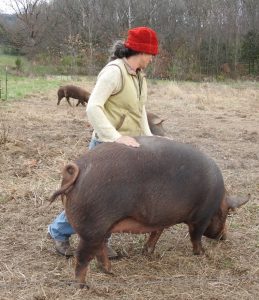
With both Gertie and Flossie, once we had Rodger the boar on the property, it was easy to tell when they were in heat. Before that, we had never seen signs of heat. We bought Rodger for the sole purpose of breeding him to both girls and then butchering him. At 11 months old, and a different breed, he was smaller than the girls and had a bit of trouble mounting. When Gertie was in standing heat, we moved her into the pen with Rodger. The sow seeks out a male to mate, so taking her to him was more natural and safer. Sows can be very protective of their areas. After quite a few flank pushes, Rodger would mount Gertie. Because of the size difference, we had to face her uphill, so her bottom was lower. Moving a sow in standing heat is not easy, nor is keeping a 300 pound boar from mounting. We were successful and after a 5 minute lock, they took a break. This was Rodger’s first time breeding, so we also had to help him…ummm…get into position. The next day they mated again, and then we removed Gertie. Once a sow is out of heat, or knows the mating was successful, they will not let mating happen again.
When it was Flossie’s turn, we knew Rodger would not be able to reach. With him in the trailer, we constructed a chute for her and a platform for him. We got Flossie in the trailer with Rodger and let him prep her with few flank pushes, and then quickly moved her into the chute for him to mount. The platform worked like a dream. No way was he reaching her without it. He still needed a little help getting into position though. We did it all again the next day for an extra breeding.
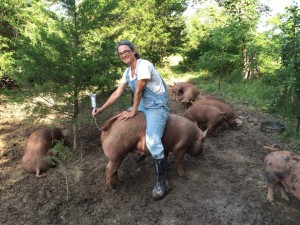
With two sows, it isn’t cost effective to keep a boar. When we decided to breed Corky we did AI, artificial insemination. It’s basically all the same prep work-flank pushes and someone sits on her back to act as the boar-insert a catheter with a tube of semen on the end and let her do her thing. You see, all that flank pushing that goes on has a purpose. When the boar does this, it stimulates the uterus to start contracting. This contracting is what pulls the semen in. No flank pushes = less success. With Corky, we decided to wait until she was a year old to breed. While she was capable at 6 months, we don’t think at that age they are ready mentally or physically to give birth. It takes a lot out of a gilt (first time mom) and a lot of things can go wrong, so waiting seemed like the best course of action. This also made it possible for her to be around her 11 siblings when they were born to get used to having little ones around.
Once breeding is complete, you wait 21 days and check for standing heat. If there are no signs of heat, you can be pretty certain the breeding took. The first 35 days of the pregnancy are the riskiest. You want to make sure you aren’t stressing the sow with long trailer rides, introducing new animals, or having them too hot or cold. We think Gertie’s first litter was so small because we moved her too close to day 35 and Flossie probably lost her whole litter from being stressed during her great escape.
Next..what to expect when your sow is expecting–piglets!
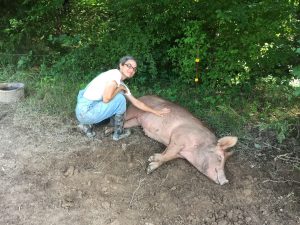
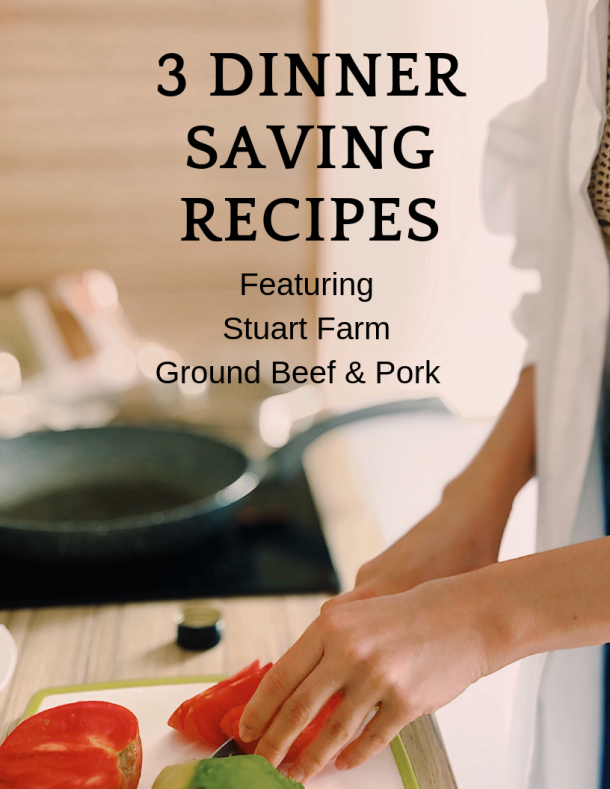
Leave a Reply